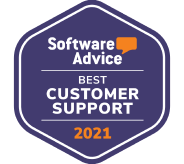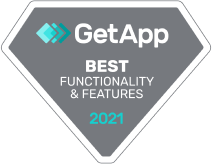If you have created surveys before, you may already know that open-ended questions can dramatically improve the quality of feedback and help in decision-making. If used correctly in combination with closed-ended questions, they can help you uncover challenges you may not have anticipated, find out what’s working best, and even innovate keeping in line with your respondents’ or customers’ expectations.
Open-Ended Questions can help you unearth information that can potentially bridge the gap between your offerings and people’s expectations. The key is asking the right questions to get the most insights.
In this article, we are talking about some super important Open-Ended Questions that can make your feedback program a huge success. Read on.
Popular Open-Ended Questions for Survey Research & Feedback Form
Here are some of the most used and helpful Open-Ended Survey Questions that you can use in your survey questionnaires:
-
What were the challenges you faced with us?
This is a perfect way to let customers, attendees, or employees (depending on the purpose of your survey) talk directly to you about the challenges they experienced. And the advantage of this Open-Ended Question is that encourages people to vent before you instead of writing a negative review online that thousands of other people can see. Moreover, it is a great way to communicate that you are focused on solving every challenge, no matter how trivial or huge it is.
-
What did you like the most about us?
When you ask respondents what they like the most about your organization or the brand, they are very likely to recall positive experiences. And these positive experiences can sometimes even outweigh negative experiences and create a good impression in customers’ or people’s minds. Moreover, the answers to this question will help you understand what’s working in your favor and help you capitalize on it further.
-
Is there anything else we should know?
One of the biggest advantages of an Open-Ended Question is that it allows you to highlight challenges that you may have completely missed. since it enables customers or respondents to consciously think about what would improve your brand. People who are invested in your brand would reflect on their experiences and recollect challenges they have faced subconsciously before writing an answer. And this information can help you tremendously in finding out challenges that may have gone unnoticed for a long time.
-
How would you describe your experience with us?
This open-ended question allows people to share the summary of their experience with you. As a result, you, as a brand, can get an insight into different experiences that may be a mix of both good and bad, which will help you understand what’s working and what’s preventing you to reach your goals. For example, in a retail store, the customers may express how they would like to avail the discount on-premises instead of just on the website. And this information can help you refine your offerings and eliminate challenges.
-
What can we do better to improve your experience with us?
An open-ended question where you are not necessarily asking the respondent to share their challenges, you can dig for an opportunity to make improvements even if it isn’t the need of the hour. But thinking ahead will help you separate yourself from the crowd. This question will encourage your respondents or customers to think as a stakeholder and help you with innovation.
-
What is the primary reason for your score?
This is usually a follow-up question in NPS, CES, and CSAT surveys. It prompts customers to share in their own words the reason for the score they chose to give you. For example, the NPS survey question 'how willing would you be to promote our brand to others on a scale of 0 to 10' can have this follow-up question. The purpose is to let customers share in their own words the reason for the score they chose to give you. This question helps brands pinpoint challenges or experiences and enables making improvement efforts in the right direction.
-
Would you recommend us to others? Please share the reason.
People willingly recommending you to others is a major indicator of the success of your relationship with them. So, make sure to ask them if they would recommend you and why. This would also help you find out what are the things stopping your respondents/customers from recommending you to others.
-
What was missing in the experience you had with us?
When you ask your customers this question, you are basically putting them in the role of your brand's stakeholders, enabling them to think from a business perspective. And this can uncover crucial information that you may have never given any thought to. For example, the customers in a restaurant may share that they would like to make reservations beforehand through a mobile application. Now, even though this feedback may not be very popular, it could certainly improve customer experience to a great extent.
- What are the factors that usually influence your purchase?
This open-ended question is a great example of a Research Survey. It is aimed at uncovering factors that may influence the purchase decisions of customers. It is an important one since brands sometimes may not be able to predict everything that customers may be expecting. The answers may not only help you improve on certain factors but also introduce new practices to attract and retain customers.
- What are one or more things that may stop you from making a purchase with us?
Often, customers may continue doing business with you until they experience something that may be a deal breaker. For example, having to wait for a long time before getting to speak to a support agent for an issue can drive customers away. Responses to this research question help in identifying potential problems before they arise. This can help brands make the right decisions to prevent customer churn.
.jpg?width=1920&name=Open-ended%20questions%20(6).jpg)
The kind of open-ended questions you can ask vary depending on the purpose of your survey. This means that you can get generalized feedback of the entire experience or dig deeper into the specifics. Let’s understand this with some examples.
Open-Ended Questions for Customer Feedback
Open-Ended Questions to capture customer feedback are aimed at understanding purchase intent of customers. The answers help brands make decisions aligned with customers' interests to be able to increase conversions/sales. Here are some examples of Open-Ended Questions in customer surveys:
- What influenced your purchase and why?
- How would you describe our customer service?
- What can we do to help you find what you’re looking for?
- How would you like us to improve our website/store?
- What is stopping you from purchasing from/doing business with us?
- What are your main concerns about our product/service/brand?
- What did you enjoy the most about our service/store?
- What is something that would prevent you from making a purchase with us?
Open-Ended Questions for Employee Feedback
There may be several workplace challenges that employers may not have anticipated. Therefore, it's best to let employees share feedback through Open-Ended Survey Questions. Here are some questions that you can add to your employee surveys:
- What is the best/worst thing you have experienced working here?
- How can we make the workplace better and more positive for our employees?
- How would you describe the growth opportunities in our organization?
- What would be the reason if you choose to end this relationship with us?
- What are the things you would change in this company as the CEO?
- What are the obstacles preventing you from achieving success at the workplace?
- Do you prefer working from home or in office? Please share the reason.
Open-Ended Questions for Patient Feedback
In a survey, 76% of the patients chose to add one or more comments to their questionnaires. There are several factors in healthcare that affect the quality of medical care. Each patient may have a unique experience. Therefore, it is important to ask them Open-Ended Questions in patient surveys to bring forth challenges that may go unnoticed.
- How could we do better to make healthcare more accessible to our patients?
- What were the primary challenges you faced in seeking healthcare with us?
- What could we do better to improve medical outcomes at our facility?
- What are the major concerns you had during your treatment?
- How would you describe our facility and healthcare?
Open-Ended Questions for Student Feedback
Most students in colleges and universities may not only have feedback on the course, faculty, campus, etc., but may also have suggestions to improve academic standards and campus environment. So, here are a few Open-Ended Questions you can ask students to welcome honest feedback:
- What are the factors that contribute to your learning and growth?
- What are the challenges stopping you from achieving excellent performance records?
- What could we do better to make learning more fun and effective on-premises?
- What would you change about the teaching style?
- What would you do better as the head of management in our institution?
- How can we create a more positive environment for our students?
- What are some changes you would make to the class/course?
- Describe how this course/institution helped you in achieving success?
Open-Ended Questions for Lead Generation
Asking Open-Ended Questions in lead generation surveys is important since it can help brands understand more about potential leads and create an effective strategy to retarget them later if not converted immediately. Here are some Open-Ended lead generation survey questions:
- How did you find us?
- What motivated you to visit our website/contact us?
- What is it that we have not covered and you would like to know more about?
- What’s stopping you from doing business with us?
- When do you plan/expect to shop with us?
- What would help us build a professional relationship with you?
- Is there an urgent problem you encountered that our business can solve?
- What are your current expectations from us?
- What do you think about our offer so far?
Conclusion
Open-ended questions can certainly improve the quality of feedback. However, there are a few things to keep in mind when using them, such as:
- Do not ask too many open-ended questions.
- Do not make open-ended questions mandatory.
- Strike a good balance of open and closed-ended questions.
- Ask open-ended questions only when you know that closed-ended questions may not cover all the information you’re expecting.
The key to creating an effective survey questionnaire is knowing your feedback goals. Begin with understanding how you want to leverage feedback. A clear goal in mind will help you understand when to use Open-Ended Questions and will ensure that you don't miss out on valuable feedback.
 Integrations
Integrations

.jpg)


.png)

 (1).jpg)
.jpg)

.jpg)


.jpg)

















